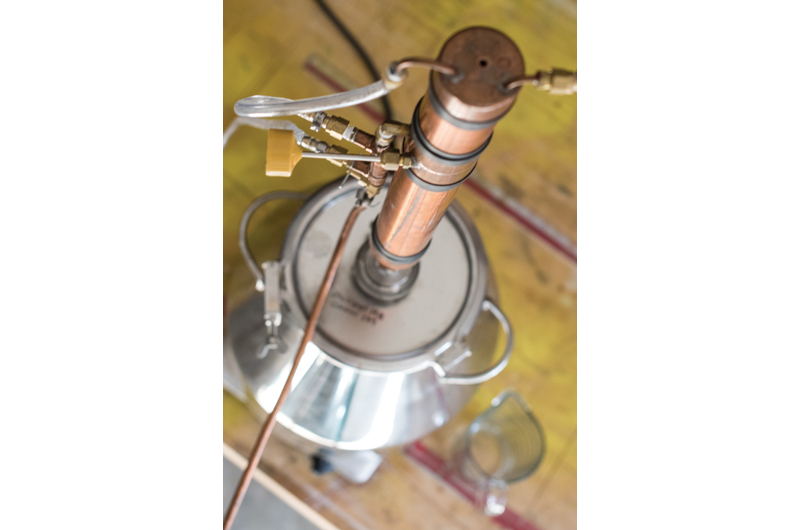The first time “Jethro” (not his real name, duh) made moonshine, it was with a still he bought from some crazy old guy in Canada who couldn’t seem to remember that Jethro had already ordered and paid for the still. It was basically two lobster kettles welded together with some copper tubing attached, but not attached very well. It eventually blew up. A faulty thermometer seemed to be the culprit.
Those first batches were a triumph of guesswork. It came off the still about twice as strong as the legit stuff you buy at the packie. The dominant notes were sugar and battery acid, which was good. The battery acid burn was self-limiting. Couple sips, done.
Then Jethro got a new modern still, and figured out how to make the ’shine taste good. Which was bad. No self-limiting. About 170 proof, it was flavored with spices and organic fruits. Couple more sips. Couple more, couple more. Different kind of done.
Once, on a sailing adventure, we found ourselves without any kindling or lighter fluid to start the grill. Jethro sprinkled a little of the moonshine on the charcoal and: poof. Inferno. True story.
I once brought some of Jethro’s moonshine to a potluck and left half the jar behind. The next week, I learned that the potluck host had rented his house to the Secret Service, in town to guard President Barack Obama. I promptly incited panic by calling Jethro and telling him his moonshine was locked up in a house full of federal agents. True story.
Recently, Jethro agreed to show me how all this goes down at the secret Martha’s Vineyard location where he works his alcoholic magic, on the solemn promise that I kept a wary eye out for the revenuers. He also insisted I acknowledge the free spirited (no pun intended), somewhat responsible nature of the project. We weren’t hurting anyone, except possibly ourselves. The project was good old fashioned New England apple jack, the northern version of moonshine.
We started with five gallons of New England cider. Added ten cups of organic sugar (after accounting for the five cups of natural sugar in the cider) and a package of special fast-acting yeast to make a “mash.” Four days later, the hungry yeast had gobbled up almost all the sugar and spit out alcohol.
The mash went into the still on a Sunday morning (forgive us, dear Lord) and started heating slowly.
The first thing that steams off, through a copper tube filled with copper mesh, is methanol. Do not drink this. It will make you go blind and then kill you. In that order. As the temperature reaches about 180 degrees, the alcohol starts to steam off. The trick is to keep the mash between 180 and 212 degrees, so no water evaporates.
A handy gizmo called a hydrometer measured the alcohol from the first bottle off the still at about 150 proof. The next bottle was even stronger. Yahoo. We poured the moonshine through a column of charcoal filters and it was done.
The finished product has a distinct apple cider flavor, and an equally distinct burn down the back of the throat. It’s definitely in the “tastes good” category.
That’s bad.







